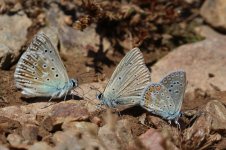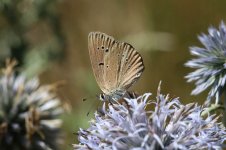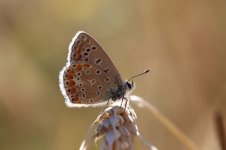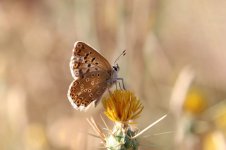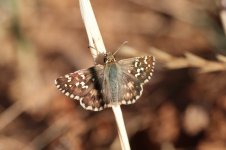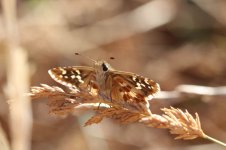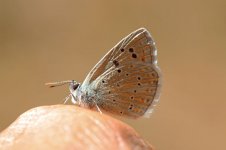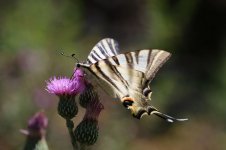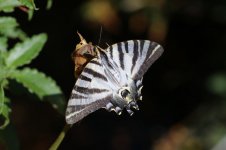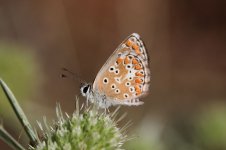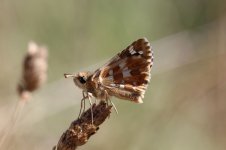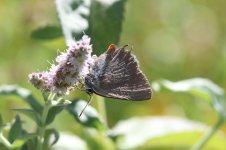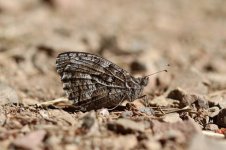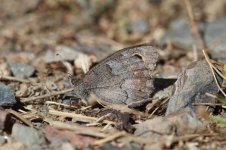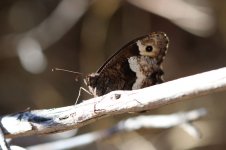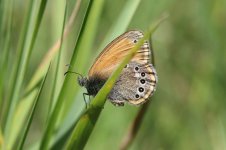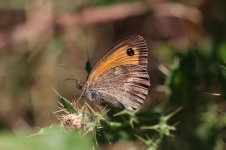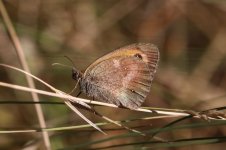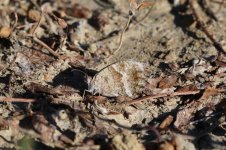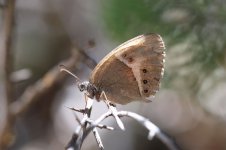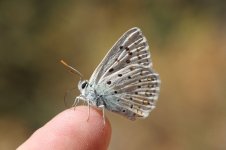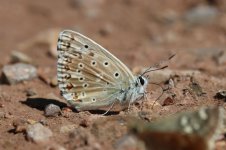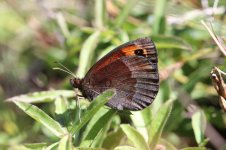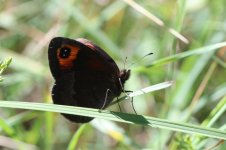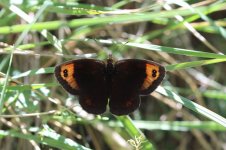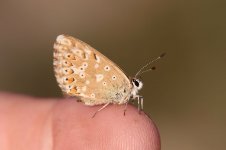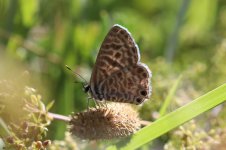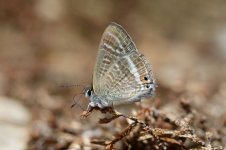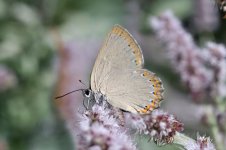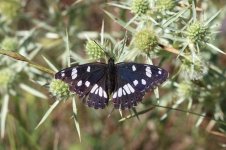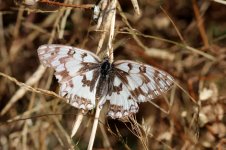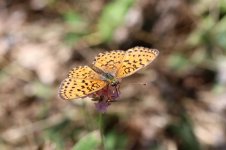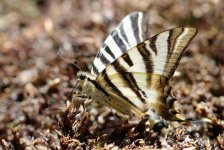
Butterflies of north-east Spain (Montes Universales & Pyrenees). 4-15 August 2021.
Following on from a trip to the Italian Alps a couple of weeks earlier, a shift to the west - ten days in noeth-east Spain. Primarily focussing on the Montes Universales, a range of mountains located between Madrid and Valencia, I then added a day on the coast near Valencia and a short extension to the eastern Pyrenees. With the walled town of Albarracín at its heart, the Montes Universales rise to 1900 metres and are a mix of arid scrub at lower altitudes and juniper or pine forest at higher elevation. Hot and dry in summer, with temperatures touching 40 C, a relative abundance of greenery and flowers does nevertheless exist along river courses and streams. In these areas, butterflies are abundant and include quite a number of species endemic to the region or north-east Spain. The main targets on this trip were Zapater's Ringlet, Mother of Pearl Blue and Southern Hermit, though the ultimate goal was simply to enjoy the spectacle of butterflies in dramatic landscapes.
Having had a very productive first week, I then spontaneously decided to add extensions to the coast and the Pyrenees, the ideas here being to see African Grass Blue and Mediterranean Skipper on the coast and thereafter a selection of high mountain species.
4 August. Barcelona to Albarracin.
No direct flights to the closer airport in Valencia, so instead flew to Barcelona, approximately five hours distant from the Montes Universales.
Arrived mid-afternoon, picked up a rental car and immediately hit the road. With no chance of reaching butterfly areas near Albarracin before evening, I decided to make good use of the afternoon and made a fairly random stop in the low hills west of Barcelona - chosen spot was on the edge of the Parc Natural de la Muntanya de Montserrat. Exceptionally arid however - no flowers, nothing green and basically no butterflies. I found a grand total of only six butterflies - one Southern Brown Argus, two Common Blues and three Mallow Skippers!
Gave up pretty quickly and continued the drive across the equally dry plains of Aragon, not a single butterfly seen on the wing. Did see a Golden Eagle however, plus one Griffon Vulture, a couple of Marsh Harriers, a flock of Lesser Kestrels and a bunch of White Storks.
Arrived in Albarracin at 8.30 pm, calls of Bee-eaters over the hills, Black Redstarts around my accommodation.
Following on from a trip to the Italian Alps a couple of weeks earlier, a shift to the west - ten days in noeth-east Spain. Primarily focussing on the Montes Universales, a range of mountains located between Madrid and Valencia, I then added a day on the coast near Valencia and a short extension to the eastern Pyrenees. With the walled town of Albarracín at its heart, the Montes Universales rise to 1900 metres and are a mix of arid scrub at lower altitudes and juniper or pine forest at higher elevation. Hot and dry in summer, with temperatures touching 40 C, a relative abundance of greenery and flowers does nevertheless exist along river courses and streams. In these areas, butterflies are abundant and include quite a number of species endemic to the region or north-east Spain. The main targets on this trip were Zapater's Ringlet, Mother of Pearl Blue and Southern Hermit, though the ultimate goal was simply to enjoy the spectacle of butterflies in dramatic landscapes.
Having had a very productive first week, I then spontaneously decided to add extensions to the coast and the Pyrenees, the ideas here being to see African Grass Blue and Mediterranean Skipper on the coast and thereafter a selection of high mountain species.
4 August. Barcelona to Albarracin.
No direct flights to the closer airport in Valencia, so instead flew to Barcelona, approximately five hours distant from the Montes Universales.
Arrived mid-afternoon, picked up a rental car and immediately hit the road. With no chance of reaching butterfly areas near Albarracin before evening, I decided to make good use of the afternoon and made a fairly random stop in the low hills west of Barcelona - chosen spot was on the edge of the Parc Natural de la Muntanya de Montserrat. Exceptionally arid however - no flowers, nothing green and basically no butterflies. I found a grand total of only six butterflies - one Southern Brown Argus, two Common Blues and three Mallow Skippers!
Gave up pretty quickly and continued the drive across the equally dry plains of Aragon, not a single butterfly seen on the wing. Did see a Golden Eagle however, plus one Griffon Vulture, a couple of Marsh Harriers, a flock of Lesser Kestrels and a bunch of White Storks.
Arrived in Albarracin at 8.30 pm, calls of Bee-eaters over the hills, Black Redstarts around my accommodation.




